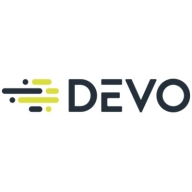

Splunk AppDynamics and Devo compete in the field of application performance and data management. Splunk AppDynamics seems to have the upper hand in application-level diagnostics due to its detailed monitoring capabilities, while Devo is advantageous in handling real-time data across multiple sources with a focus on speed and efficiency.
Features: Splunk AppDynamics provides stack trace analysis, JVM monitoring, and transaction tracking for precise diagnostics. It also offers application flow maps, deep dive diagnostics, and business transaction tracking. Devo focuses on high-speed data ingestion and real-time analytics, operational dashboards, and multi-tenant architecture for enhanced data handling across diverse environments.
Room for Improvement: Splunk AppDynamics could improve on user interface intuitiveness, integration with modern systems, and cost complexity reduction. There's also a need for better network monitoring and asynchronous call tracking. Devo needs to enhance log parsing efficiency, broaden third-party integrations, and increase the availability of pre-built monitoring solutions. Flexibility in user data handling should also be improved.
Ease of Deployment and Customer Service: Splunk AppDynamics supports various environments including on-premises and hybrid clouds, though deployment can be complex and requires careful planning. It is known for strong customer service and comprehensive support. Devo is praised for straightforward deployment in public and private cloud environments and has proactive customer service, although some report occasional delays. Splunk AppDynamics is noted for its extensive post-sales engagement, while Devo offers broad multi-cloud support.
Pricing and ROI: Splunk AppDynamics is viewed as premium-priced but provides significant time savings and improved application quality, despite complex licensing. Its ROI is often associated with reduced MTTR and improved productivity. Devo's pricing is based on data ingestion volumes, making it cost-effective for large data sets. Users benefit from predictable costs with straightforward licensing, appreciating the substantial ROI from rapid analytics and comprehensive data handling.
| Product | Market Share (%) |
|---|---|
| Splunk AppDynamics | 18.6% |
| Devo | 4.8% |
| Other | 76.6% |


| Company Size | Count |
|---|---|
| Small Business | 7 |
| Midsize Enterprise | 4 |
| Large Enterprise | 11 |
| Company Size | Count |
|---|---|
| Small Business | 55 |
| Midsize Enterprise | 36 |
| Large Enterprise | 188 |
Devo is the only cloud-native logging and security analytics platform that releases the full potential of all your data to empower bold, confident action when it matters most. Only the Devo platform delivers the powerful combination of real-time visibility, high-performance analytics, scalability, multitenancy, and low TCO crucial for monitoring and securing business operations as enterprises accelerate their shift to the cloud.
Splunk AppDynamics enhances application performance monitoring with advanced diagnostics and real-time insights, offering seamless end-to-end transaction tracking and infrastructure visibility.
AppDynamics provides critical tools for businesses to analyze application behavior and performance. Through innovative features like transaction snapshot analysis and adaptable dashboards, users can quickly identify and address issues, ensuring high levels of system uptime and efficiency. It is designed to support complex environments including Kubernetes and AWS, enhancing user experience by detecting performance issues early. Despite needing improvements in network monitoring and integration, it remains a robust option for tracking application health.
What are the key features of AppDynamics?In industries like financial services and e-commerce, AppDynamics facilitates performance tracking across distributed systems, optimizing infrastructure to meet consumer demands. It excels in environments needing precise transaction monitoring and is pivotal in delivering high value and satisfaction.
We monitor all IT Operations Analytics reviews to prevent fraudulent reviews and keep review quality high. We do not post reviews by company employees or direct competitors. We validate each review for authenticity via cross-reference with LinkedIn, and personal follow-up with the reviewer when necessary.